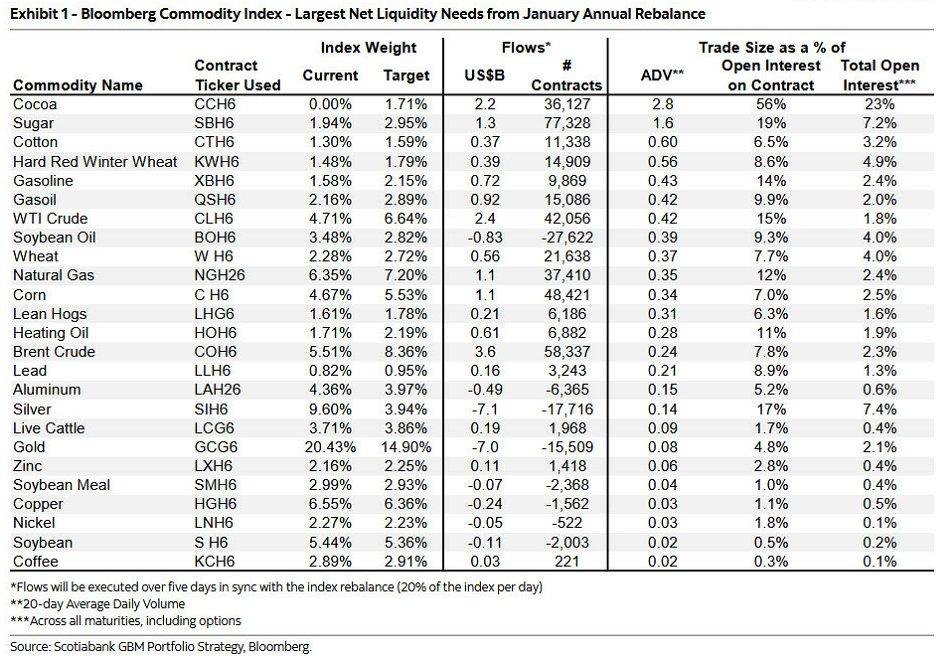Overview: The dollar is little changed against the major currencies ahead of the US jobs report. It has been trading heavier than we expected given that two more G10 central banks cut interest rates ahead of the Federal Reserve. Next week is its meeting and the market-sensitive CPI. US rates have fallen, and as we note below, the US two-year premium over Germany is at its lowest in nearly three months. The euro is about 0.4% higher on the week ahead of the US data. The odds of two Fed cut this year are now near 90%, double a week ago. Only the Canadian dollar and Norwegian krone among the G10 have not risen against the greenback so far this week. Falling US bond yields helped lift the yen by over 1%, for its best week since intervention in early May. A larger-than-expected Chinese trade surplus and may have helped the Chinese yuan today, but this week, like last week, it is virtually unchanged. The Mexican peso has stabilized after yesterday's sharp drop.
Equities are mostly lower today. In Asia Pacific, India stands out with a 2% advance and is up about 3.5% this week. Japan, Taiwan, Hong Kong, and Australia were lower, and China mixed. Still, the MSCI Asia Pacific Index is finishing higher on the week, recouping about half of what it lost in the past two weeks. Europe's Stoxx 600 is also snapping a two-week decline. But its gain is being pared today by about 0.3%, leaving it up a little less than 1% this week. US index futures are little changed now and are up 2.0%-2.5% this week. Gold is staging a large downside reversal following news that the PBOC did not buy gold last month for the first time in 18-months. Gold initially took out yesterday's high (~$2378.60) before turning down and taking out yesterday's low ($2354.60). It is near $2339 in Europe. It settled near $2327 last week. July WTI extended its recovery from the $72.50 area seen on Tuesday, a four-monthly low. It reached a four-day high near $75.65 today, but it is still off around 1.8% this week, its third consecutive weekly loss.
Asia Pacific
Japan's household spending rose by 0.5% in the 12-months through April. It is the first year-over-year increase since last February. For this time series, "households" do not include single people leaving by themselves. Recall that April retail sales rose 1.2% for a 2.4% year-over-year gain. The lower underlying wage growth reported earlier this week has weakened the speculation that the BOJ could announce a reduction in its bond purchases at next week's meeting. That said, a Bloomberg survey of "BOJ Watchers" found that roughly half expect the central bank to trim its purchases. This, coupled with the drop in US yields, has seen the 10-year JGB yield fall by 15 bp since the May 30 high of 1.10%. This is the biggest pullback in the yield this year. However, today it snapped a four-day decline. China reported a sharp jump in May exports (7.6% vs. 5.7% expected) and weak increase in imports (1.8% vs. 4.3% expected). The net result was a $82.6 bln trade surplus, the largest since January. While many observers cite Chinese subsides and other state aid and preferential treatment, many foreign companies still use China as an export platform. This is in stark contrast with Japan in the 1980s that caused consternation (and protectionism) in the US and Europe. This is what is changing. At the same time, like the US companies did in post-WWII, and Japanese companies did in the 1980s and 1990s, Chinese companies also have begun moving production offshore. This seems mostly a response to real and anticipated protectionism in the US and Europe and rising labor costs domestically, not an overvalued currency. Separately, China reported a $32 bln increase in the dollar value of reserves to $3.23 trillion. It reportedly did not buy gold last month for the first time in a year-and-a-half.
Since the day after the April US CPI (May 15), the dollar has been in about a 1.5-yen range on both sides of JPY156.00. Despite the more than 35 bp decline in the US 10-year yield since May 30, the yen has found little succor. The greenback is consolidating today on the JPY155-handle. It seems vulnerable to a recovery of US rates, whether in response to today's jobs data, or the run up to next week's US CPI and FOMC meeting. The Australian dollar continues to be confined to the $0.6600-$0.6700 range, which has defined the exchange rate for more than a month on a closing basis. It is in roughly a 10-tick range around $0.6670 today. Australia reports its jobs data next week and it is expected to be firm. Still, the odds of a rate cut this year have risen this week, following the disappointing 0.1% growth in Q1 GDP to around 40% from 10% at the end of last week, with little impact on the exchange rate. The PBOC set the dollar's reference rate at CNY7.1106 (CNY7.1108 yesterday and CNY7.1088 last Friday). The average in Bloomberg's survey was CNY7.2435 (CNY7.2434 yesterday and CNH7.2398 last Friday). The dollar is virtually unchanged against the offshore yuan over the course of the week, ahead of the US jobs report.
Europe
The ECB delivered the hawkish cut is appears that had been anticipated. The updated forecasts suggest no further substantial improvement in CPI. The preliminary estimate of May's CPI was 2.6%. The year-end estimate by the ECB's staff is now 2.5% (up from 2.3%). Next year's CPI forecast was revised to 2.2% from 2.0%, with the 2026 forecast left unchanged at 1.9%. This year's growth forecast was raised to 0.9% from 0.6% and is now more in line with other forecasts (e.g., EC and IMF at 0.8%). Next year's growth forecast was shaved to 1.4% from 1.5% (the same as the EC; the IMF forecast is 1.4%). However, the interest rate derivative market heard something else. The swaps market boosted the chances of a July hike from about 15% to a bit over 35%. The odds of a third cut this year increased from around 63% to 77%. Meanwhile, the US two-year premium over Germany narrowed further yesterday. It is slipping below 170 bp for the first time since in nearly three months.
The euro set yesterday's range (~$1.0860-$1.0900) in about a 30-minute period from a few minutes before the ECB's announcement to a little after it. The single currency stayed in that range through President Lagarde's press conference and settled firmly. The euro is trading flat in the upper end of its range ahead of the US employment data, and despite a disappointing German industrial production (-0.1% vs. expectations for 0.2%). It is in less than a 20-tick range below $1.09. There are almost 1.9 bln euros in options almost evenly divided between $1.0885 and $1.0900 that expire today, though given the price action, they may have been neutralized. The euro may be particularly vulnerable to a robust US jobs report that lifts US interest rates. The euro closed last week slightly below $1.0850. A close above there today would be euro's seventh weekly advance in the past eight weeks. Sterling's run has been nearly as impressive. It settled near $1.2740 last week, and a close above it would be the sixth weekly advance in the past seven. It is in a 20-tick range mostly below $1.28. Next week, ahead of the US CPI and FOMC meeting, the UK's employment report is due, and the market is sensitive to it, especially the earnings component. Still, the market has nearly ruled out a change in policy at the BOE's June 20 meeting especially since the election has been called for July 4. There are almost GBP450 mln in options that expire today struck at $1.28. This week's high has been slightly above $1.2815.
America
The US labor market is gradually slowing. If the median forecast for a 185k gain in nonfarm payrolls is accurate, it would be the first back-to-back sub-200k growth since November-December 2018, leaving aside the pandemic. Fed Chair Powell has argued that the headline PCE deflator is the best inflation measure for its purposes, but that there is not one number that captures the multidimensions of the labor market. Yet, given the job growth, and still low level of unemployment, despite the historically aggressive monetary tightening, the central bankers will still regard that labor market as sufficiently strong to give inflation time to moderate further. Consider that the three-month average of nonfarm payrolls is 242k, the same as the six-month average. The 12-month average through April was slightly lower at 234k. In the larger picture, we have argued that while we expect US economy activity to slow, April data may have overstated the case. Most of May's survey data improved sequentially and today's jobs report will be an important test of the hypothesis. Canada also reports its April job figures. On the one hand, Canada's job creation has resilient. In the three months through April, it created an average of 43k jobs a month, of which 36k have been fulltime jobs. In proportionate terms this is arguably better than the US. However, Canada's job growth has not kept up with the labor force growth and the unemployment rate has risen from 5.0% in April 2023 to 6.1% in April 2024. When the US and Canada report their employment figures at the same time, the reaction to the US data drives the exchange rate. And with the Bank of Canada rate cut earlier this week, the implications for policy may be marginal. Mexico reports May CPI figures today. The year-over-year headline pace is expected to rise slightly while the core is seen extending its decline. Political reverberations continue to be the dominant force.
The US dollar began the week with support near CAD1.3600 reinforced and traded near the upper end of its range (~CAD1.3750) in the middle of the week, after the Bank of Canada became the first G7 central bank to cut rates. The US dollar has found a near-term shelf near CAD1.3660. The swaps market has the Bank of Canada cutting at least one more time before the Fed moves. The sidesways movement has neutralized the momentum indicators. It may be most prudent to assume the range remains intact until proven otherwise. Meanwhile, for all practical purposes, the net speculative position in the futures market has the largest short Canadian dollar position since 2017. That said, the bulls have added to the net long position for the past three weekly reporting periods. The Mexican peso appeared to have stabilized after its post-election thrashing, but reports that constitutional changes will be discussed after the new lower house is sworn in and before Sheinbaum's inauguration. This plays on market fears of what AMLO could do in his last days. It could be that he does not have sufficient faith in Sheinbaum, or it could be about his legacy. The dollar traded mostly between MXN17.45-MXN17.65 yesterday before jumping to MXN18 on the news. The greenback is consolidating so far today between roughly MXN17.80 and MXN18.02. The Bolsa had briefly turned higher on the week after closing more than 6% lower on Monday. After being up over 2% yesterday, it sold-off late and was off about 0.75% before recovering to settle about 0.1% higher. It is off a nearly 1.3% this week coming into today.
Full story here Are you the author? Previous post See more for Next post
Tags: #USD,Canada,China,Currency Movement,ECB,Featured,Japan,jobs,newsletter,Trade,US



























